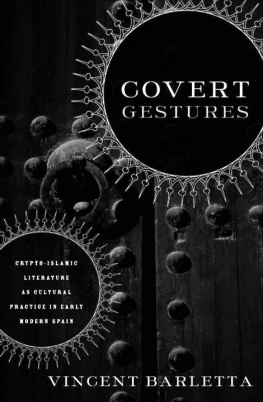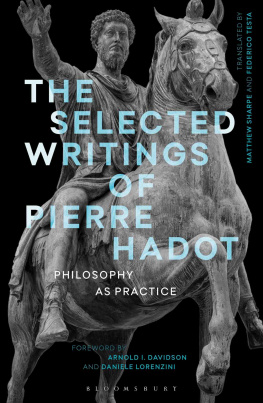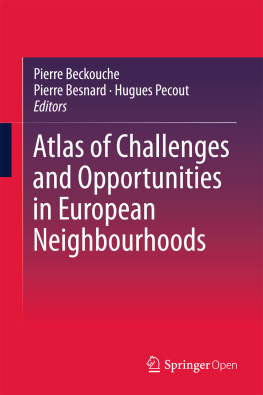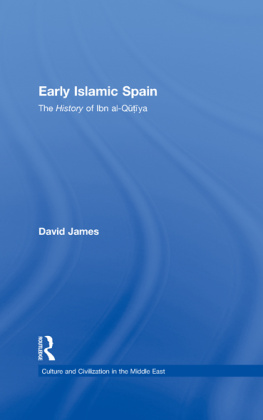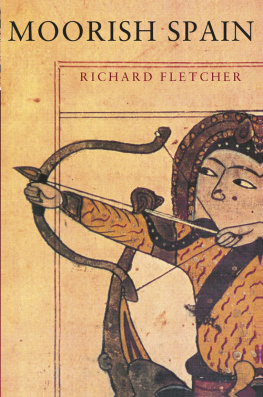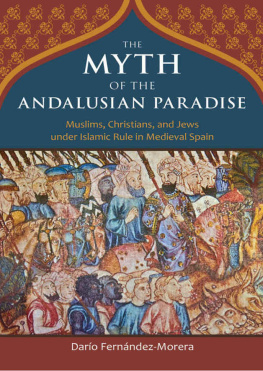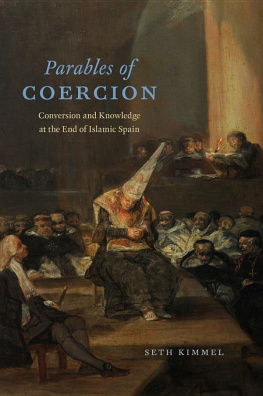First published 1965 by Transaction Publishers
Published 2017 by Routledge
2 Park Square, Milton Park, Abingdon, Oxon OX14 4RN
711 Third Avenue, New York, NY 10017, USA
Routledge is an imprint of the Taylor & Francis Group, an informa business
Copyright 1965 by W. M. Watt and P. Cachia.
All rights reserved. No part of this book may be reprinted or reproduced or utilised in any form or by any electronic, mechanical, or other means, now known or hereafter invented, including photocopying and recording, or in any information storage or retrieval system, without permission in writing from the publishers.
Notice:
Product or corporate names may be trademarks or registered trademarks, and are used only for identification and explanation without intent to infringe.
Library of Congress Catalog Number: 2006048049
Library of Congress Cataloging-in-Publication Data
Watt, W. Montgomery (William Montgomery)
A history of Islamic Spain / W. Montgomery Watt and Pierre Cachia.
p. cm.
Includes bibliographical references and index.
ISBN 978-0-202-30936-1 (alk. paper)
1. SpainHistory711-1516. 2. MuslimsSpainHistory.
I. Cachia, Pierre. II. Title..
DP102.W38 2007
946'.022dc22
2006048049
ISBN 13: 978-0-202-30936-1 (pbk)
FOREWORD
In 1939 the prospect of a war which would involve many Asian nations made men in positions of responsibility in Britain suddenly aware of the meagre number of our experts in Asian languages and cultures. The Scarbrough Commission was set up, and its report led to a great expansion of Oriental and African studies in Britain after the war. In the third decade after 1939 events are making clear to ever-widening circles of readers the need for something more than a superficial knowledge of non-European cultures. In particular the blossoming into independence of numerous African states, many of which are largely Muslim or have a Muslim head of state, emphasises the growing political importance of the Islamic world, and, as a result, the desirability of extending and deepening the understanding and appreciation of this great segment of mankind. Since history counts for much among Muslims, and what happened in 632 or 656 may still be a live issue, a journalistic familiarity with present conditions is not enough; there must also be some awareness of how the past has moulded the present.
This series of "Islamic surveys" is designed to give the educated reader something more than can be found in the usual popular books. Each work undertakes to survey a special part of the field, and to show the present stage of scholarship here. Where there is a clear picture this will be given; but where there are gaps, obscurities and differences of opinion, these will also be indicated. Full and annotated bibliographies will afford guidance to those who want to pursue their studies further. There will also be some account of the nature and extent of the source material.
While the series is addressed in the first place to the educated reader, with little or no previous knowledge of the subject, its character is such that it should be of value also to university students and others whose interest is of a more professional kind.
The transliteration of Arabic words is essentially that of the second edition of The Encyclopaedia of Islam (London, i960, continidng) with three modifications. Two of these are normal with most British Arabists, namely, q for k, and j for dj. The third is something of a novelty. It is the replacement of the ligature used to show when two consonants are to be sounded together by an apostrophe to show when they are to be sounded separately. This means that dh, gh9 kh, sh9th (and in non-Arabic words ch and zh) are to be sounded together; where there is an apostrophe, as in acTham, they are to be sounded separately. The apostrophe in this usage represents no sound, but, since it only occurs between two consonants (of which the second is h)9 it cannot be confused with the apostrophe representing the glottal stop (hamza), which never occurs between two consonants.
W. Montgomery Watt
GENERAL, EDITOR
For many centuries Moorish Spain has stirred the imagination of Europe. Ballads gave glamour to the courageous stand of Roland in the pass of Roneesvalles, while legends surrounded the figure of the Cid and made him a great hero. Nor was it merely the struggle against the Moors which caught the imagination. The better-informed inhabitants of the rude Christian kingdoms and dukedoms of western Europe realised that south of the Pyrenees was a land of higher culture, where amid material luxury men enjoyed the delights of music and poetry; and they gradually took over what they could of this culture. With the romantic movement something of the old admiration was revived, and it is doubtless through the influence of Washington Irving that "Alhambra" has become a familiar word to many who know nothing of the fourteenth-century palace.
Even for the prosaic scientific historian, who speaks of Islamic Spainstrictly, "Muslim" applies only to persons the subject is not without its fascination. Here an oriental culture has entered Europe and left behind magnificent architectural remains. It offers an important example of the close contact of diverse cultures, and one that has contributed to making the European and American historian what he is. The chief monuments of this culture are relatively easy to visit, and in most seasons the visit is delightful. Moreover the study of Islamic Spain gives answers to questions regarding the general nature of historical processes. Such questions will guide the treatment of the subject in the present work, and may be briefly indicated here under three heads.
Firstly, Islamic Spain must be looked at in itself. It is commonly regarded as having great and magnificent achievements to its credit. But in what did its greatness consist? The loveliness of the buildings it has left? Works of pure literature that are major contributions to the world's store? Philosophical, scientific, or religious writings with a secure place among the classics of the "one world" into which we are moving? Or is this image of Islamic Spain largely dependent on the contrast between its luxury and the bareness of contemporary life in the rest of western Europe, and on the fact that it was the channel through which elements of higher culture, both material and intellectual, entered Europe?
Secondly, Islamic Spain must be looked on as a part of the Islamic world. It shared in the culture of a vast area, and the character of its links with the heartlands must be looked at. How did it keep in touch? Was it mainly a passive recipient or did it make any distinctive contribution to Islamic culture as a whole? May it be regarded as an active cell in the body-social of Islam? On the other hand, how far had it become adapted to the special circumstances of the Iberian peninsula, such as climate, geography and the mingling of religions? Did it manage to integrate the various racial and social groups into a unity, and to impregnate the whole society with its values? A subordinate question is that of the relation of Spain to North Africa, especially the part which is now Morocco and Algeria. How far were the two regions a single cultural area dominated by Spain?




